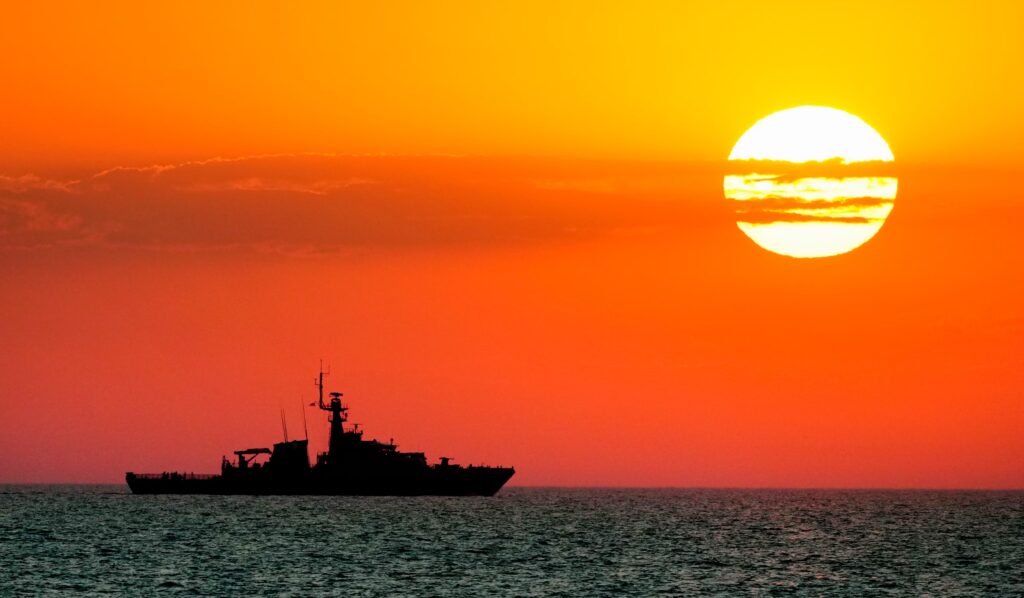Romania has mobilized its entire navy for “Sea Shield 25,” a large NATO maritime exercise in the Black Sea. The operation started in early April and ends on April 11. Around 2,600 troops from 12 NATO countries took part, including 1,600 Romanian personnel. The goal: prepare for modern threats and build stronger cooperation between allies.
The Romanian fleet deployed dozens of warships, patrol vessels, helicopters, and surveillance aircraft. The drills were held near the Romanian coastline and offshore zones close to NATO’s eastern flank. The mission included Albania, Bulgaria, Canada, France, Greece, Italy, Spain, the UK, the US, Turkey, and the Netherlands.
Full-Scale Operations Simulate Real Combat
The multinational teams practiced a wide range of combat tasks. These included live-fire drills, air-to-sea strikes, and coastal defense. Troops also trained for surprise attacks and hybrid warfare — a mix of cyber, psychological, and conventional tactics.
In one scenario, a Romanian naval radar detected an unknown target 64 kilometers offshore. An IAR 330 Puma Naval helicopter took off immediately to identify the object. Naval forces were placed on alert, and air units responded to intercept the threat. These exercises reflect real risks in the Black Sea, especially amid the ongoing war in Ukraine.
Focus on Underwater and Chemical Threats
To increase safety at sea, the Mine Countermeasures Black Sea Task Group joined the exercise. Their goal was to find and destroy underwater explosives like sea mines — many of which still drift from past conflicts.
Lieutenant-Commander Cătălin Harabagiu highlighted the importance of coordination during such missions. He said seamless communication between ships, aircraft, and divers is key. Combat divers and CBRN (chemical, biological, radiological, nuclear) specialists also ran tests. These involved simulated chemical leaks, sabotage attempts, and rapid ship-boarding actions.
Romanian commanders stressed the importance of precise teamwork. Units had to react fast to unfamiliar threats in real-time, often without warning.
NATO Tests Its Regional Readiness
Rear-Admiral Cornel Cojocaru, head of Romania’s Naval Forces, said the drills come at a critical moment. He pointed to the threat posed by Russian submarines, warships, and aircraft in the region. According to Cojocaru, Russia has repeatedly used these tools to strike Ukraine since the war began.
Cojocaru urged NATO to invest more in modern equipment and training. “Technology alone is not enough,” he said. “You need people who are ready, trained, and adaptable.”
Sea Shield has become a major part of NATO’s strategy since it began in 2015. Each year, the event gets larger and more complex. This edition lasted 12 days and focused on defending NATO’s eastern border — an area seen as increasingly vulnerable.
NATO Sends a Clear Message
Military leaders said “Sea Shield 25” was more than a drill. It was a show of unity and strength. As new forms of conflict rise — including drone attacks, cyber warfare, and disinformation — NATO forces are adapting.
The exercise confirmed that Romania is a key defense hub in the region. Its navy now works closely with allies in both planning and real-time operations. NATO commanders said this helps ensure fast and effective reactions to future challenges.
As global tensions grow, joint training events like “Sea Shield 25” are vital for NATO. They prepare allies for real threats and keep key regions secure. Romania’s leadership in hosting this mission shows its strong role in defending Europe’s southeastern edge.
